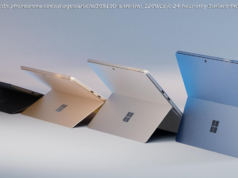Wear OS was not just given a facelift by Google by simply changing its name from Android Wear and while a massive portion of the attention is going to the Android P beta for now, it is not the only thing that is being worked on at the moment. The Wear OS Developer Preview 2, or…
Wear OS was not just given a facelift by Google by simply changing its name from Android Wear and while a massive portion of the attention is going to the Android P beta for now, it is not the only thing that is being worked on at the moment. The Wear OS Developer Preview 2, or DP2 which is made available for many smartwatches and other timepieces is here and brings forth a lot of changes.
With Wear OS DP1, there were things like dark UI becoming the new default interface, as well as SDK restrictions that were aimed at improving stability, and new rules for background apps that were intended to prolong battery life. The new release now serves as feedback that is sent back to the developer and because the changes were so aggressive before, things needed to be toned down.
The Wear OS DP2 addresses some of the things that were lacking in Android Wear before and the latest preview has also introduced a brand new enhanced battery-saving mode.
The Wear OS DP2’s new enhanced battery-saver mode is something that limits the capability of your smartwatch. It can disable the radio, touch input, and ‘tilt to wake’ function all in one action. This helps to extensively increase battery life and if you want to disable the enhanced battery-saver mode, you can tap the physical side button, perform a quick tap to view the time, or simply carry out a long press to fully disable it and restore regular operation of the wearable.
A new LG Watch timepiece is going to be released in the near future, and it too will be running Wear OS. When the official update is released for various different smartwatches, we will be able to see what sort of improvements have been introduced.
Also keep in mind that Qualcomm is planning to introduce a successor to the 28nm Snapdragon Wear 2100 SoC, so combine this chipset with Wear OS and we might finally start seeing some improvements from Google’s wearable operating system and the devices that run it.



![How Samsung’s Engineering Feat Became a Catalyst for Scientific and Industry Advancement [Interview on Real Quantum Dots Part 2.]](http://nhub.news/wp-content/uploads/2025/04/thumbf05802c9b4bc0557fad4012c9d80d8e4-238x178.jpeg)


